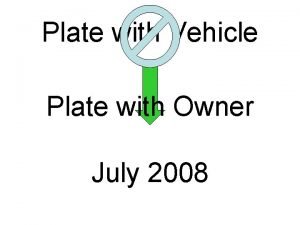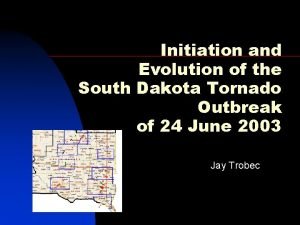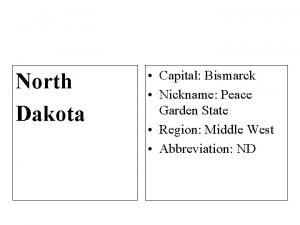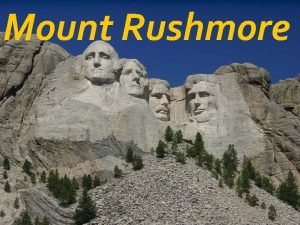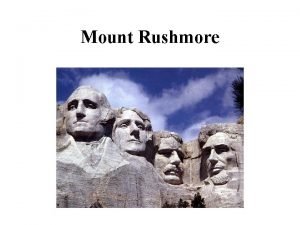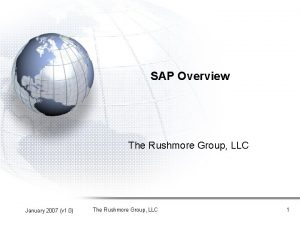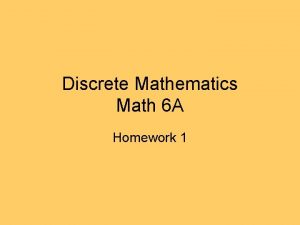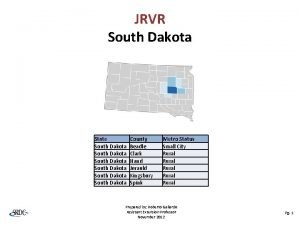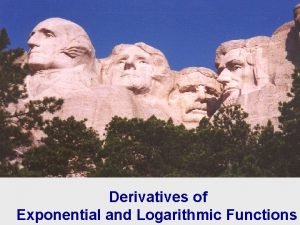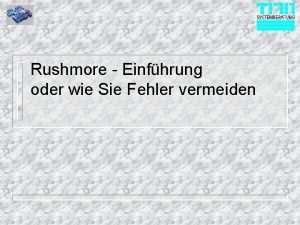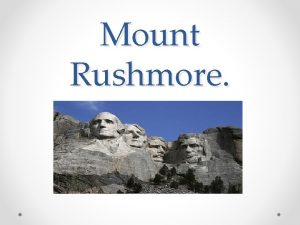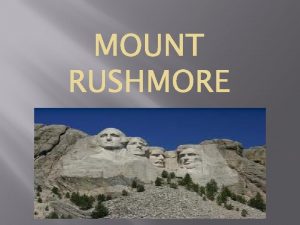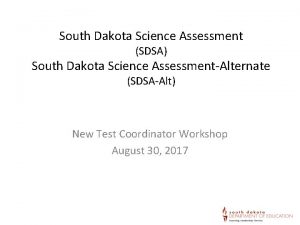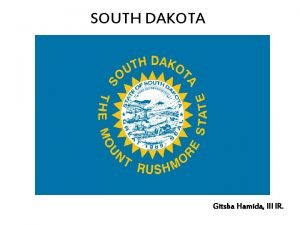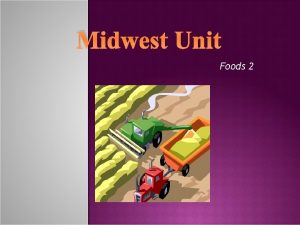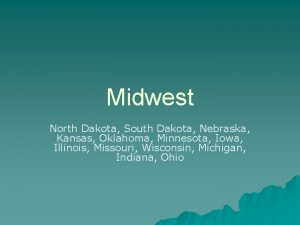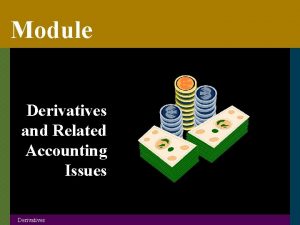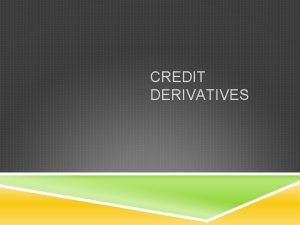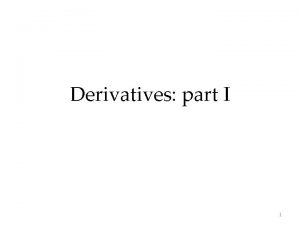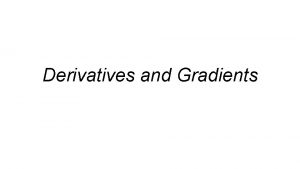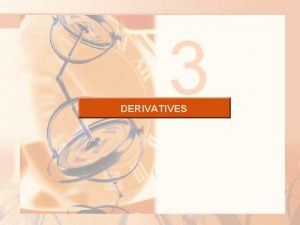Mt Rushmore South Dakota 3 9 Derivatives of






















- Slides: 22

Mt. Rushmore, South Dakota 3. 9: Derivatives of Exponential and Logarithmic Functions Photo by Vickie Kelly, 2007 Greg Kelly, Hanford High School, Richland, Washington

Look at the graph of The slope at x=0 appears to be 1. If we assume this to be true, then: definition of derivative

Now we attempt to find a general formula for the derivative of using the definition. This is the slope at x=0, which we have assumed to be 1.


is its own derivative! If we incorporate the chain rule: We can now use this formula to find the derivative of

( and are inverse functions. ) (chain rule)

( is a constant. ) Incorporating the chain rule:

So far today we have: Now it is relatively easy to find the derivative of .


To find the derivative of a common log function, you could just use the change of base rule for logs: The formula for the derivative of a log of any base other than e is:

p

Implicit Differentiation 3. 6

Implicit Differentiation So far, all the equations and functions we looked at were all stated explicitly in terms of one variable: In this function, y is defined explicitly in terms of x. If we re-wrote it as xy = 1, y is now defined implicitly in terms of x. It is easy to find the derivative of an explicit function, but what about:

This is not a function, but it would still be nice to be able to find the slope. Do the same thing to both sides. Note use of chain rule.

This can’t be solved for y. This technique is called implicit differentiation. 1 Differentiate both sides w. r. t. x. 2 Solve for .

Find dy/dx if:

Find dy/dx if: Chain Rule

Find dy/dx if: Produ ct Rule!

Find the equations of the lines tangent and normal to the curve at . We need the slope. Since we can’t solve for y, we use implicit differentiation to solve for Note product rule. .

Find the equations of the lines tangent and normal to the curve at tangent: . normal: Normal line is perpendic ular to tangent

Product Rule is easier than quotient rule, so let’s cross multiply! Find derivative at (1, 1)

Higher Order Derivatives Find if . Substitute back into the equation.
 Embassy suites south dakota
Embassy suites south dakota South dakota trust law
South dakota trust law Temporary license plate south dakota
Temporary license plate south dakota North dakota league of cities
North dakota league of cities South dakota perinatal association
South dakota perinatal association South dakota counseling association
South dakota counseling association South dakota municipal league
South dakota municipal league Linda lewis south dakota
Linda lewis south dakota South dakota state university
South dakota state university Northwest south dakota
Northwest south dakota Bowdle south dakota tornado
Bowdle south dakota tornado The garden state nickname
The garden state nickname South dakota great faces great places
South dakota great faces great places Skills usa south dakota
Skills usa south dakota Mount rushmore
Mount rushmore Mount rushmore background
Mount rushmore background The rushmore group
The rushmore group Lucrezia locatelli
Lucrezia locatelli Blackberry trail mount rushmore
Blackberry trail mount rushmore Mt rushmore rock composition
Mt rushmore rock composition Old south vs new south streetcar named desire
Old south vs new south streetcar named desire Example of proposition in math
Example of proposition in math Die weisheit der dakota indianer
Die weisheit der dakota indianer


